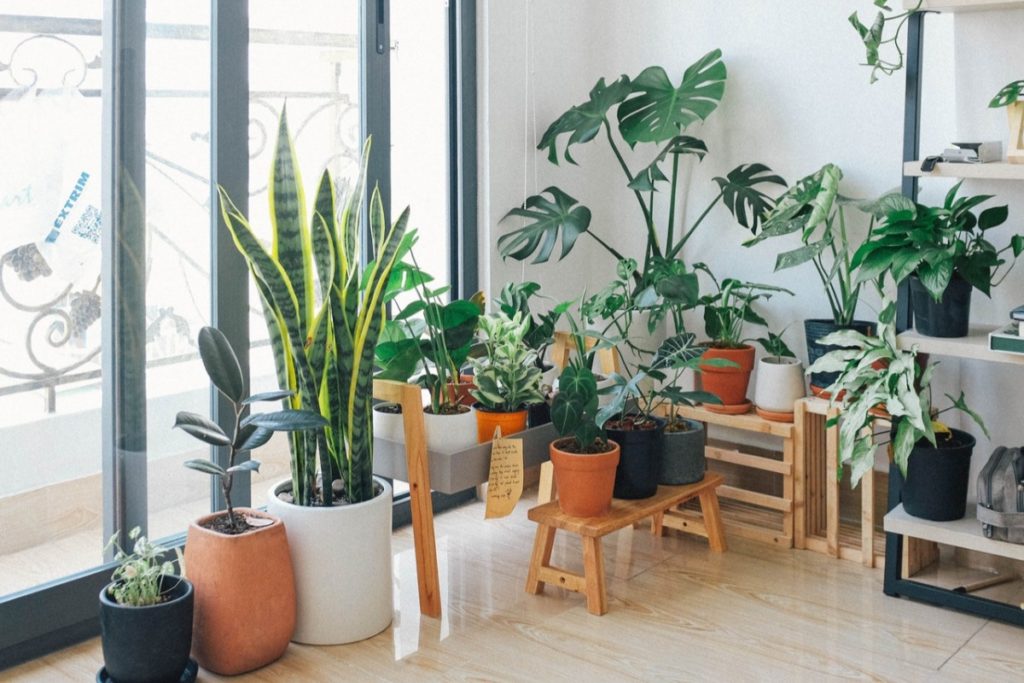We’ve all heard of the garden of Eden, right? What if we told you that you could have that kind of paradise right in your home? Are you worried that you don’t have a big enough land area for a garden?
Don’t worry. You can set up your indoor garden if you have a small place and enjoy the same benefits.
Outdoor Garden vs. Indoor Garden
Even though you could get almost all the same benefits from an outdoor and an indoor garden, we can’t say the same for quite a few things. In building a garden, there are some differences between these two types.
Climate
Plants that need plenty of sunlight are best grown outdoors. On the other hand, plants that require a controlled climate to cultivate would be better off indoors. That prevents them from freezing during winter. For instance, tropical plants can be grown indoors with the help of a humidifier and adjustments on the thermostat.
Space
There are many types of plants that can grow outdoors but not indoors. One of the reasons is that outdoors simply offer bigger space. That means naturally tall and wide plants wouldn’t be able to grow and reach mature size in an indoor setting.
That’s not an adequate reason to abandon the idea of gardening altogether, though. There are still many types of plants that can grow in an indoor setting. It may not grow to a ten-foot tree, but the point is that you’d still get the benefits of having and growing a garden.
Water
One of the main differences between indoor and outdoor gardens is the water supply. In an outdoor garden, plants receive their regular water supply from rainfall, which is quickly drained through proper irrigation. On the other hand, indoor garden owners must provide their garden its water supply.
Light
After discussing these differences, one thing that’s common in indoor and outdoor gardens is that their plants need light to survive. However, the source of light may not be similar.
For example, outdoor plants generally get their light from the sun, while indoor plants need their own lighting. Thankfully, this can be provided by grow lights.

The Advantages of Grow Lights
We know that grow lights seem to be just another thing that you need to understand in indoor gardening, but don’t quit just yet. Having grow lights will be beneficial not just for the plants but for you, as well. To further explain that, we’ve listed down some advantages of grow lights in your indoor garden.
Quick Growth Means Quick Harvest
Plants crave sunlight to grow and fully mature. The reality is that the sun is only around for a few hours, and your plants have to wait again overnight to receive sunlight.
With grow lights, you have total control over the amount of light that your plants receive, which means that they can undergo photosynthesis even at night. That helps them grow quicker, letting you harvest their fruits, leaves, or whatever you need from them.
Environmentally Friendly
Starting a garden almost always translates to saving the environment. The good news is that this advocacy is further promoted by grow lights.
This is why LED grow lights are used in shipping container gardens that use vertical farming. Grow lights that run on LED do not produce harmful chemicals that may otherwise be harsh for your environment. It also does not heat up, which means that the air around you wouldn’t burn. Less waste means being environmentally friendly.
Prolonged Lifespan
If you’re not a big fan of maintenance tasks, grow lights would dive deep into your heart. Many types of grow lights now operate on LED technology, which means that they will run at lower temperatures.
Your grow lights get to provide light for your plants for extended periods, reaching up to 50,000 hours of lifespan. That’s almost six years of never having to worry about changing your light source.
Energy- and Cost-Efficient
Not having to change your light source for years is already cost-efficient, but to further strengthen the point, grow lights are actually great for your electricity bill. One of the significant differences with grow lights that use LED technology is that it does not burn anything to produce light. That means less energy is used for it to function. With lesser energy consumption comes a lesser cost of electricity.
When starting an indoor garden, always pay attention to what your plants need to thrive and be full of life. While this article may have provided you with some brief insights into the use of grow lights for indoor gardening, what matters most is that you understand your plants and you know how to take care of them.

